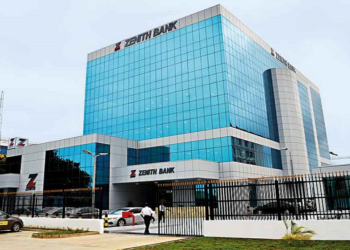Sound financial indices have made Zenith Bank one of the largest banks in the Nigerian banking Industry. It was recognized as the Most Valuable Banking Brand in Nigeria 2019, in the Global Banker magazine Top 500 Banking brands; and Best Commercial Bank in Nigeria 2019, by the World Finance.
Zenith Bank has successfully bolstered this narrative even further with the release of its Half Year 2020 Financial Report, where it closed with a profit of N103.8 billion.
Growing profit position in these perilous times, speaks remarkably of the suppleness and elasticity of any establishment. A lull in economic activity caused by inflationary pressures, precariousness of the market, and the coronavirus pandemic has forced most Deposit Money Banks (DMBs) to cave in, and reveal achievements worse off than their 2019 results y/y – but not Zenith Bank Plc. The institution has showcased beyond reasonable doubt, that the apparent limitations are incapable of distorting its active growth pattern.
Zenith Bank closed H1 2020, 16.8% better off than it did in 2019 y/y, in terms of profit after tax. Although this massive leap, hugely resulting from tax paid as profit before tax, noted just a 2.2% growth. Further analysis of its HY’2020 results, demonstrates more efficiency, a focused cost of fund optimization, and an aggressiveness in generating income across its business heads and segments. This strategy had begun since 2018, and was shared by the bank when it disclosed planned implementation of an improved core banking system, hoping it would ultimately enhance efficiency while reducing costs.
Zenith Bank has thrived on the strength of its sound business model, corporate governance, conservative risk management, and strategic corporate social investment. The bank has been very forceful in the market, improving massively across all of its income generating segments, despite the plausible and obvious hindrances. This is a testament to its superiority, and sponsors its claim for supremacy.
The bank made N22billion from foreign exchange revaluation gains and despite evidence to the contrary, it endeavored in operating expenditure (OPEX). OPEX may have grown by 7.7%, but disclosures and note to the accounts shows that in virtually every expense head, costs dropped. The 7.7% was triggered majorly by Information Technology related costs, fuel and maintenance, and an increase in the compulsory banking cost fund, set up for the Asset Management Company of Nigeria (AMCON) by the CBN.
Now, like every hero susceptible to their hubris, Zenith has its own problems, which questions its position at the top. Yes, the bank may have an amazing and constantly improving interest expense to interest income ratio, but it does not possess the finest result in this regard as of yet. HY 2019 interest expense took as much as 33.6% of its income, while HY 2020 dropped to 27.4%. This is good, but still considerably high, if we carry out a peer-to-peer analysis with Guarantee Trust Bank Plc (masters of low-interest expenses), whose ratio stands at 16% for HY 2020.
However, Zenith has sustained the momentum of positioning itself as the crème de la crème in the Nigerian Banking Industry for quite some time. The bank’s pattern of growth and performance, strongly indicates its capabilities to manage its interest expense in subsequent quarters. It will be interesting to see how this pans out by year end.
In summary, despite economic difficulties this year, with most bank’s bottom-line at a worse position than the corresponding period last year, Zenith posted improved profit yet again. Could this be enough to portray supremacy?

















